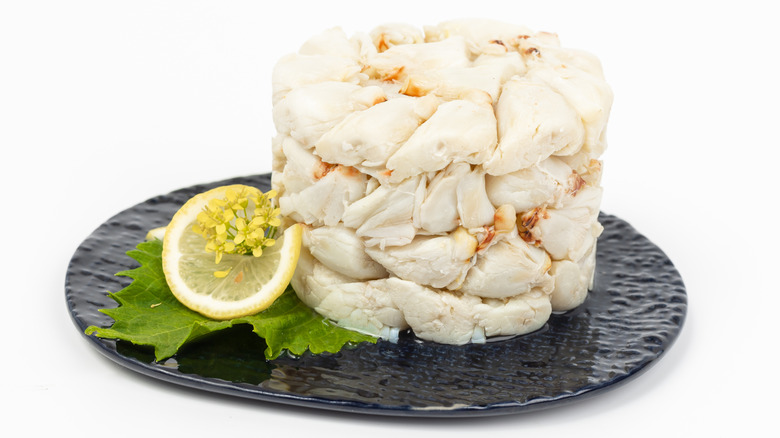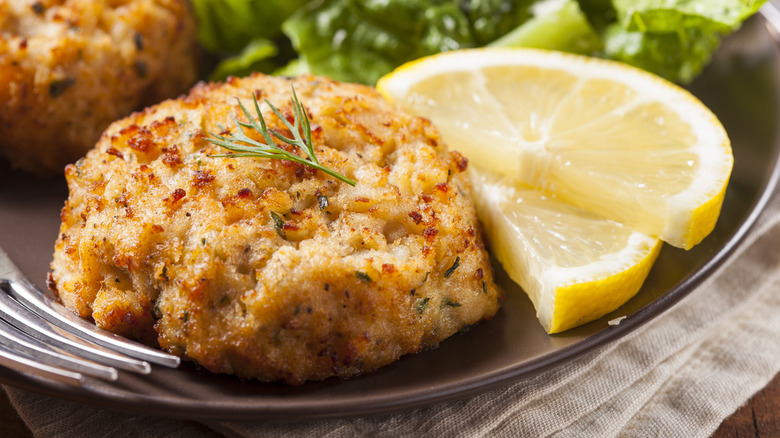You Don't Always Need Fresh Crab — Save Money And Reach For Canned Instead
Sweet and briny crab is a delicate, kissed-by-the-sea treat for the taste buds that can unfortunately be hard on your wallet. When you're making a dish starring crab, or when only snow crab or king crab legs will do, it's worth paying the high cost for it. But when this low-fat, high-protein seafood is part of an ensemble of flavors, you can save some money with canned crab — one of the best affordable seafoods.
Canned crab is shelved in stores with tuna fish and sardines (which really are different from anchovies), and it can in fact cost as little as a can of tuna. Blue swimming crab is what's most commonly used for canning. The meat is cooked and packed in water with preservatives, salt, and sometimes a little sugar, a process that produces a more muted flavor. Another premium type of canned crab (sometimes in plastic tubs) is kept in the refrigerated section. It's pasteurized for less time and at a lower temperature than the shelf-stable crab, retaining more flavor and texture. It's also a lot more expensive. This canned crab isn't actually much of a money-saver, but you do get shelled crab convenience.
Prices for both types vary depending on the crabmeat grade. Highest and most expensive are colossal and jumbo lump crab meat, which give you large sweet nuggets of meat. Lump crab is a mix of torn jumbo lump and larger body meat pieces. Backfin is flaky smaller body pieces with a more prominent taste. The claw meat has the strongest flavor, and this least costly grade is darker than the others.
Cooking with canned crab
To save the most money, use the shelf-stable crab or choose a more inexpensive brand of the premium kind, and blend it with other flavors to get the most out of it. Buy shelf-stable lump crabmeat for a little more money instead of white crabmeat, which is body meat, or pink crabmeat, a mix of body and claw meat, for the best of this affordable type.
Drain the crab and gently rinse it first to wash away the salty packing water and perk up the meat. You could also let it sit in cold water for 10 minutes, or in milk to reduce its fishiness. Pat the crabmeat dry, and then it's ready to use.
Canned crab would work well with classic crab cakes, whose binders and flavoring ingredients will enhance its taste. It can flavor stuffed mushrooms and crab dip, which can be served either heated or cold. Use it to give unexpected depth to tuna salad, or make a homemade crab rangoon, which has a different history than you might think. Try cooking it with crushed tomatoes, garlic, red bell pepper, and olive oil for a quick weeknight pasta sauce. You can also add it to soups and chowders, but keep in mind that the crab is already cooked, so it might be best to add it close to the end of the cook time.

